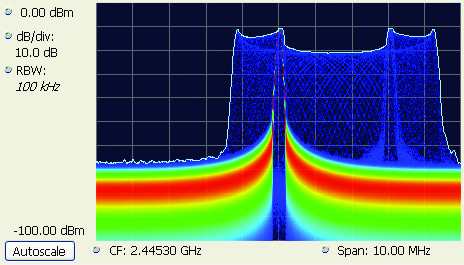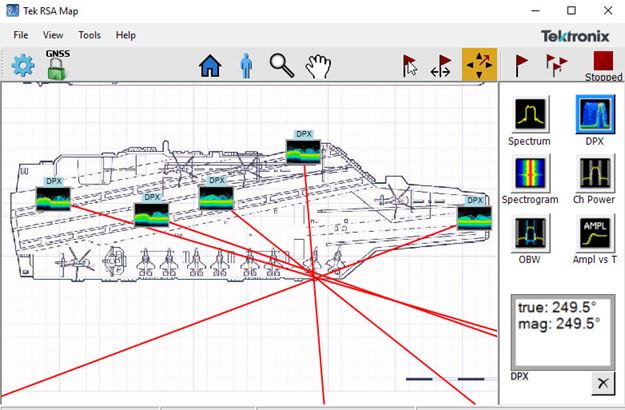

The wireless spectrum is a finite commodity that is tightly regulated, managed and shared by all nations, manufacturers and citizens, who risk being fined if they are caught operating outside of what's regulated or licensed. The presence of interference or other signals of interest creeping into one's band of wireless spectrum is a daily occurrence to some and is of great concern to many who may deal with high demand or critical radio applications.
There’s also the proliferation of C-band and millimeter wave 5G transmitters, as well as low-cost wireless transmitters thanks in part to the Internet of Things. With now over 20 billion wireless devices worldwide, and advances in drones, machine learning, AI and deep data, there's a need for monitoring the wireless spectrum continuously in order to more rapidly and efficiently detect and locate RFI or signals of interest.
These and other industry and environmental trends (COVID-19) have created three main system design challenges associated with spectrum monitoring.
ONE: Dealing with Technical Challenges
There are six main technical requirements when putting together a spectrum monitoring or RF sensor-based system that need to be addressed. They are summarized here:
- Remotely monitor signals of interest (SOI) – Not all sensors or spectrum analyzers are created equal when it comes to interfacing programmatically from a remote location. Consider the bandwidth for sending RF recorded data and results, and factor in environmental considerations when choosing your RF sensor size, weight, and power, as the RF sensor may be in the field for a long duration. It’s important to have the ability to power a PC off and on remotely, as well perform system recovery if the PC or the AR sensor crashes or locks up. It’s fortunate that most of this remote access is supported in a stable and powerful Windows or Linux environment.
- Detecting short duration or transient RF (SOI) – To effectively monitor for interference or signals of interest for eventual identification in the field, it's important to collect as much information as possible about how the spectrum is changing over both short and long periods of time. You want to be able to log the data and go back and forth and compare traces at a later point.
In terms of tools, today’s real-time spectrum analyzers are capable of providing the user with 100% probability of intercept on signals as short as 15 microseconds or shorter in some instances. Unlike the real-time spectrum analyzer, other lower-performing receivers or analyzers are incapable of providing a guaranteed probability of intercept specification for short duration signals because of their traditional swept-tuned hardware architecture, which sweeps from low frequency to higher frequency.
- Characterizing signals of interest – Here we want to try and match based on certain signal characteristics, and profile based on parameters such as frequency, bandwidth, power, pulse repetition interval, and crest factor. As an example, pulsed radar typically utilizes very low duty cycle RF pulses (less than 10% usually) and range and resolution are determined by the pulse repetition frequency or PRF. It's also determined by pulse width and transmit power. Determining the level of pulse repetition interval, agility is important in order to provide receivers and jammers with the appropriate information to take action.
- Signal identification – With the growing congestion of complex digitally modulating signals used in wireless systems today, especially in urban environments, signal identification and analysis become even more challenging in the field, requiring the right mix of measurement equipment and expertise to properly separate and identify the many different signals within a given band.
- Locating the source of interference or SOI – In order to locate a signal using specialized signal processing algorithms, such as Time Difference of Arrival (TDOA), or Angle of Arrival (AOA), or even more basic forms of radio location, such as through triangulation, then you're going to need at least two good measurements, preferably four or more to be able to give the greatest accuracy and resolution and space for your target. So, you're going to need to collect measurements from multiple locations using fixed or handheld spectrum analyzers or sensors, or possibly a combination of both.

- Recording and playing back across all environments – When you have handheld spectrum analyzers that operate by recording signals using .WAV files or trace files, but then you have fixed RF recorders that record I&Q or IF data captures or streams, you're going to run into compatibility issues, and you'll probably have a tough time trying to compare data streams. This task becomes even more difficult to correlate when your organization or team is working across different instrument vendors.

TWO: Maintaining Operational Readiness
The second challenge involves maintaining operational readiness of the spectrum monitoring system. This means a) being able to support new innovative spectrum monitoring technologies and capabilities as they become available, b) supporting and mitigating obsolescence of old technologies, c) enabling easy transition from old to new technologies, and d) facilitating interoperability across different platforms. It’s important to isolate the effects of changes, as well as any new technologies, which could result in failures, missed events or risks scenarios. When hunting for interference or signals in the field, your handheld instrument might get dropped from time to time. So, it will be important to have a robust solution that can operate in a variety of harsh weather conditions.
THREE: Balancing Performance versus Price
There are limitations of a swept spectrum analyzer that affect performance and are directly tied to price. In addition, with the USB-based real-time signal analyzer there are also limitations. Likewise with traditional performance systems or wideband RF recording receivers. All of these systems are very unique, yet necessary for anyone who needs to simultaneously record and analyze long durations of wide bandwidths of spectrum in real time.
USB real-time signal analyzers are a great fit and a good balance of performance and price for lab, mobile, and fixed or remote applications. They make for a cost-effective alternative to overly designed traditional monitoring systems or wideband RF recording systems. And when multiple USB-based RF sensors are networked and time-correlated together, it's possible to stitch multiple instantaneous bandwidth together and perform wideband spectrum monitoring as you would with a system that's 100 times more expensive.



